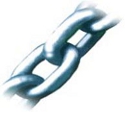 Last year’s Google Panda updates were a major wake up call for web masters across the world. Sloppy SEO practices, content farms and low quality content were punished and a lot of sites saw their traffic, and revenue, fall dramatically. Fortunately, recovering from Panda’s punch is possible if you’re willing to make a few changes and commit your site to quality content.
Last year’s Google Panda updates were a major wake up call for web masters across the world. Sloppy SEO practices, content farms and low quality content were punished and a lot of sites saw their traffic, and revenue, fall dramatically. Fortunately, recovering from Panda’s punch is possible if you’re willing to make a few changes and commit your site to quality content.
Here are 8 tips and tools for bouncing back from the Panda and staying in Google’s good graces. (Spoiler: most of them involve improving quality!)
 1. Preserve Quality Pages
1. Preserve Quality Pages
Getting knocked back by the Panda doesn’t mean you’ve been knocked out entirely. Clearly there were aspects of your site that Google didn’t like, but that doesn’t mean you have to start over from scratch.
Spend some time with an analytic tool and isolate your high traffic pages in the months before Panda. Take a close look at these pages and figure out how they can be brought up to Panda standard. Remember, your site visitors liked these pages even if Google didn’t, so you must have been doing something right with them.
When these pages are re-tooled, re-optimized and filled with quality content they’ll be the core of your new, Panda-friendly site.
 2. Weed Out Punctuation Errors
2. Weed Out Punctuation Errors
Spend some time proofreading. High quality, error free content is one of the simplest, cheapest and most effective defenses against Panda. Like it or not, Google is taking on the role of grammar cop on the Internet. Panda punishes poor punctuation and rewards good grammar.
So take some time and really proofread the content on your site. The fact is, this is not something that an algorithm should be forcing you to do in the first place. If you’re not comfortable proofing copy yourself, spend a few dollars hiring a freelancer to do it for you.
Think of it this way, on-page typos don’t just make you look bad to Panda, they make you look bad to people who might start spending money with your affiliate partners.
 3. Amp Up Quality
3. Amp Up Quality
Panda evaluates quality in a number of ways that go beyond how good your content reads (though that is factored in as well). In the eyes of Google, quality includes content; relevancy, outbound and inbound links; and a host of other factors. This is good news for publishers because quality, unlike popularity, is something that webmasters have a lot of control over.
When making your site more Panda friendly, you need to cast off all the dead weight you can and rely on fresh, relevant content. This may mean you have to remove a few links that aren’t pointing towards relevant site. You’ll wind up scrapping a lot of short, and meaningless, content. But the more you amp up your quality, the more Panda friendly you’ll become.
 4. Evaluate Links
4. Evaluate Links
Inbound and outbound links have always weighed heavily in Google algorithms and the Panda updates are no exception. For years, many sites relied on plenty of internal links, along with as many inbound links as they could get. Where those links were coming from didn’t really matter much. But the Panda has changed that equation considerably.
To combat content farms, Panda looks not only at the quantity of links coming and going, but the quality of those links. The days of linking back and forth with any site that would have you are long gone. When you’re getting your site back on its feet, you need to carefully examine every link and decide if it’s going someplace relevant to your topic.
You can keep your focus on external links during this part of the process because Google won’t punish your site for too many internal links if the external links are relevant. If this process is just too overwhelming, consider investing in a software suite like Ultimate Rank Protector to help you with some of the grunt work.
 5. Think About User Behavior and User Experience
5. Think About User Behavior and User Experience
User experience and behavior are two factors that Google weighs pretty heavily when determining popularity. How long are visitors staying your site and how many pages they’re clicking matter a lot these days. So having an easy to navigate, sticky site is a good way of getting back in Google’s good graces.